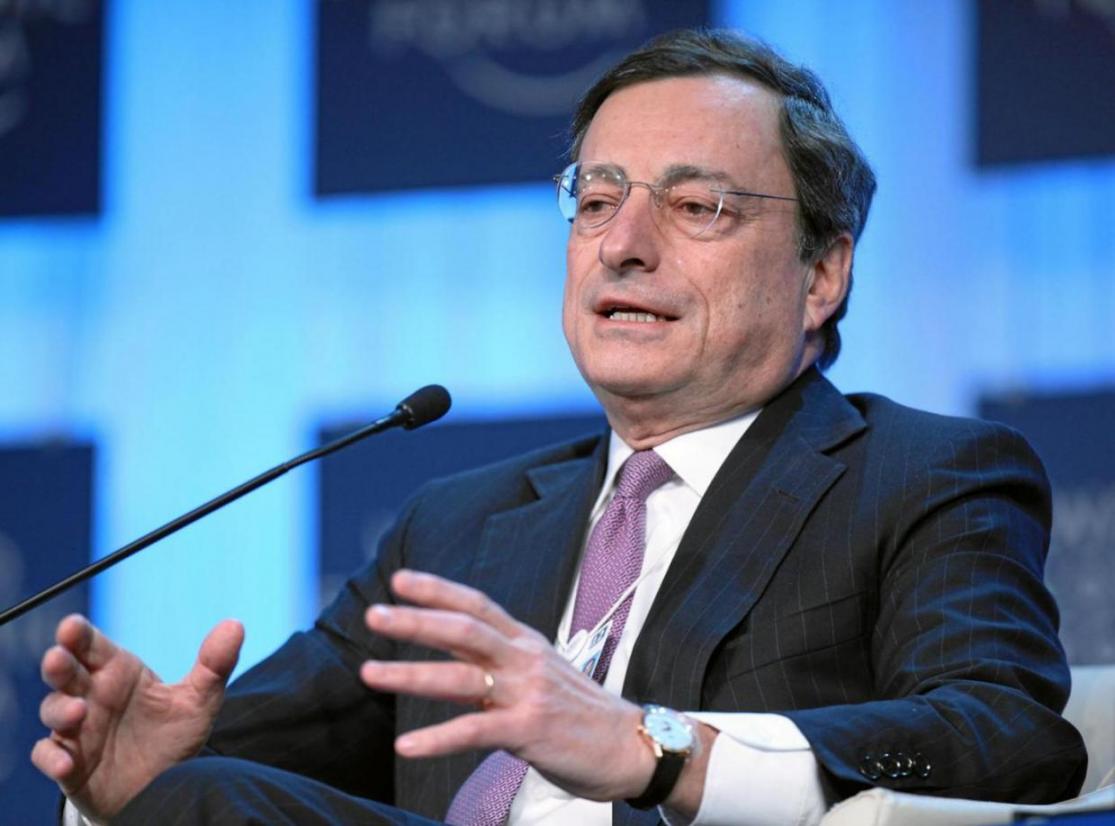Mario Draghi is halfway through his job and, by the strictest measure of his success, still far from his goal.
The European Central Bank president spent the first four years of his eight-year term battling to keep the eurozone intact and winning over opponents to quantitative easing. In the second half of his tenure–if he’s lucky–he might actually meet his legal mandate of price stability, Bloomberg reported.
When he meets with his governing council colleagues on Tuesday at the ECB’s annual reception, two days after his fourth anniversary as the institution’s chief, the 68-year-old may be tempted to take credit for strengthening the currency bloc’s foundations and keeping Greece in the club. If he’s more modest, he might remind himself that slowing global growth and a slump in commodity prices threaten to deny him the successful inflation record boasted by his predecessors.
“They were so focused on ‘whatever it takes’ and peripheral spreads that they kind of missed the fact that there was a business cycle and they were missing the target on inflation,” said Nick Kounis, head of macro research at ABN Amro Bank NV in Amsterdam. “If your main target is inflation, and you’ve missed it for the last few years and you’ll miss it for the next few, then that will be a black mark for Draghi’s record.”
It is ironic that Draghi has found himself trying to stave off deflation. The biggest concern, especially in Germany, was that putting an Italian at the top of the ECB would lead to prices escalating.
Inflation has averaged 1.2% in the four years since Draghi succeeded Jean-Claude Trichet in November 2011, according to Bloomberg calculations. The Frenchman can look back to 2.1% during his tenure, and Wim Duisenberg, the ECB’s first president, managed 2%. The ECB’s goal is below but close to 2%.
Profound Changes
In an interview with Italy’s Il Sole 24 Ore over the weekend, Draghi said his years in office so far have “certainly have been eventful and marked by profound changes to the structure of monetary policy.” He also called the eurozone’s situation over that period “extraordinary.”
Draghi’s overriding concern so far has been to protect the 19-nation bloc from a Japan-style protracted period of stagnating or falling prices and declining growth potential.
Yet despite record-low interest rates, long-term loans to banks and a €1.1 trillion ($1.2 trillion) asset-purchase plan, he hasn’t succeeded in returning inflation to the goal. Now, faced with a fragile recovery at risk from weaker global trade, a euro that may be too strong for the economy and the risk of a slump in energy prices, he’s holding out the prospect of another round of monetary easing in December.
That’s when new forecasts will show whether the inflation goal is receding still further. The ECB predicted in September that euro-area inflation would accelerate to 1.7% in 2017. The rate was zero in October.
Big Banks Cut Forecasts
Big investment banks are cutting their forecasts for the euro and eurozone bond yields as the divergence between US and eurozone monetary policy looks set to widen, potentially in dramatic fashion next month.
Morgan Stanley on Monday said it now expects the single currency will fall to $1.03 early next year, and Citi said 10-year the German Bund yield could go as low as 0.1%.
The forecasts assume the European Central Bank will expand its quantitative easing bond-buying program next month and cut its deposit rate further below zero.
Both US banks expect the ECB to cut its deposit rate 10 basis points at its Dec. 3 meeting to -0.3% and increase its monthly asset purchases by €15 billion to €75 billion.
By contrast, the US Federal Reserve is widely expected to raise rates in coming months. The chances are 50-50 it will move at its next meeting, on Dec. 15-16, according to current market pricing.


